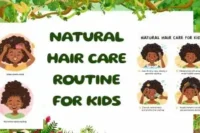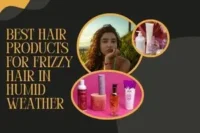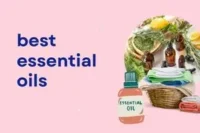Effective Tips To Remove Lice From Hair Permanently At Home
Published: 7 Jun 2025
Dealing with head lice can be frustrating, especially when over-the-counter treatments fail to deliver results. If you’re looking for effective tips to remove lice from hair permanently at home, you’ve come to the right place. Many families in the USA struggle with lice infestations, particularly among school-aged children. Knowing how to spot head lice early and using the right natural remedies can save you time, money, and stress. From the nit comb technique to essential oils and smart cleaning routines, this guide covers it all. Say goodbye to endless scratching and hello to peace of mind. Let’s explore the best ways to remove lice eggs and keep them gone for good.
What Are Head Lice and Why Are They a Problem?
Head lice are tiny insects that live on the scalp. They feed on blood and lay sticky eggs called nits. A scalp infestation causes itching and sores. These pests multiply rapidly and are difficult to eliminate. One louse can lay up to 100 eggs, making natural remedies for lice and lice treatment for kids a real necessity.
The biggest issue is their rapid spread. Close contact, shared combs, and hats facilitate the transfer of the virus from one person to another. It’s important to know the difference between lice and dandruff-because dandruff doesn’t move or stick to hair like lice eggs do.
Where Do Lice Come From?
Lice don’t come from dirt. They spread through contact. You can get lice from hugging, sharing pillows, or using the same towel. Even people with clean hair can get lice. Many parents ask, How do lice spread? The answer is simple: head-to-head contact and shared items.
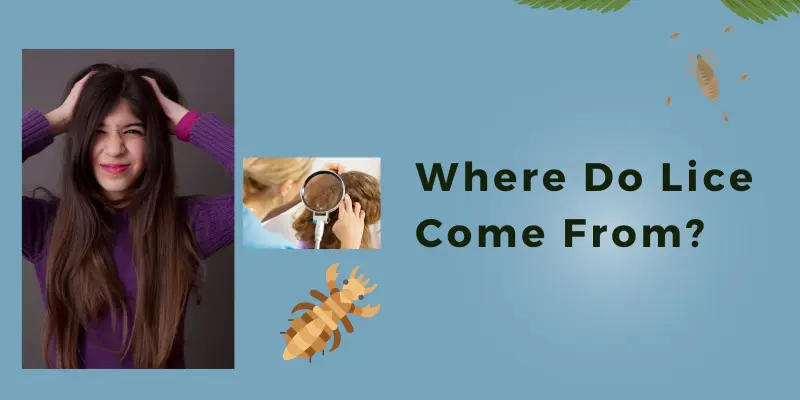
It’s a myth that lice jump or fly- they crawl. So, places like schools, camps, and households are common sources. Even a quick selfie with heads touching can lead to an infestation.
How Do Head Lice Spread?
Once lice get on one person, they move fast. Kids in school often play close together, making it easy for lice to crawl from one scalp to another. That’s why lice treatment for kids must be quick and thorough.
Lice can survive for a short time off the scalp. So, yes, can lice live on furniture? For up to 48 hours. That’s why lice infestation home cleaning includes washing bed sheets, hats, and even sofa covers.
Understanding the Head Lice Life Cycle
To get rid of lice, you must understand their life cycle. Lice start as eggs (nits), then hatch into nymphs, and finally become adults. Nits take 7–10 days to hatch, and nymphs take another week to become adults.
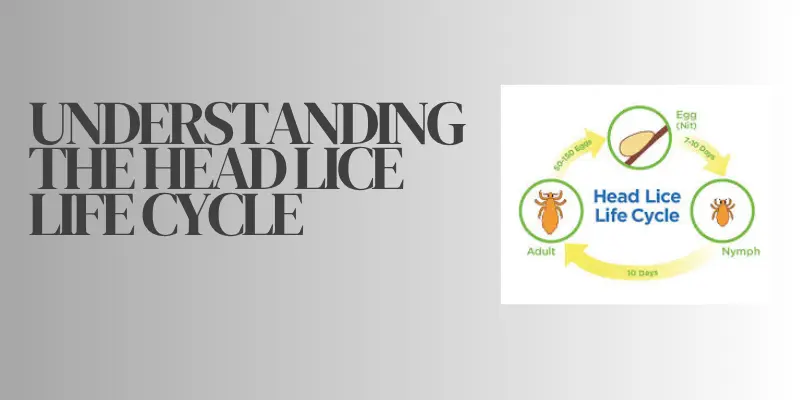
If you only kill adult lice, the eggs will hatch again. That’s why a re-treatment schedule is essential. Many people think their lice treatment isn’t working-when in fact, they just skipped the second round.
Signs and Symptoms of Head Lice Infestation
The most common signs of lice in children include:
- Itchy scalp
- Tiny red bumps
- A crawling sensation on the scalp
If your child keeps scratching behind the ears or the back of the neck, check for lice. Want to know how to diagnose head lice? Look for tiny white or brown nits stuck to the hair shaft. Adult lice can be hard to spot. Use a special tool like Wood’s light, which makes lice glow under light.
Easy Home Remedies to Remove Lice Permanently
There are several home remedies for lice that work effectively:
- Coconut oil and apple cider vinegar: The oil suffocates lice, while vinegar helps loosen the eggs. You can also use a coconut oil mask and apply it to your hair.
- Neem oil and tea tree oil: Neem oil and tea tree oil: These essential oils for lice affect their breathing and can kill lice naturally, while also promoting Neem Oil for Hair Health by nourishing the scalp and strengthening strands.
- Mayonnaise or petroleum jelly: These thick products can smother lice overnight.
- Salt and vinegar spray: This is a simple dehydration lice treatment that dries out the pests and weakens their grip.
Note: Vinegar doesn’t kill lice eggs, but it helps loosen them for easy removal.
Step-by-Step Method: How to Use These Remedies
- Start with clean, dry hair.
- Apply your chosen remedy-oil, mayonnaise, or essential oils.
- Cover the head with a shower cap and leave it for at least 6 hours.
- Rinse and use a fine nit comb thoroughly.
Wondering how to use a nit comb? Start at the scalp and pull outward slowly. Wipe the comb after each stroke. Repeat this process every 3 days for 2 weeks. This is one of the best ways to remove lice eggs completely.
Other Natural Solutions That Work
- Hair straighteners: Heat may kill adult lice, but they often miss eggs near the scalp.
- Herbal shampoos: Products with tea tree or eucalyptus can help repel lice.
- Dry brushing and daily checks: Dead lice don’t move, and nits appear dull. Shiny nits may still be alive.
Consistency is key; don’t give up after just one treatment.
Hygiene and Cleaning Tips to Prevent Reinfection
Once lice are gone, you must clean everything thoroughly:
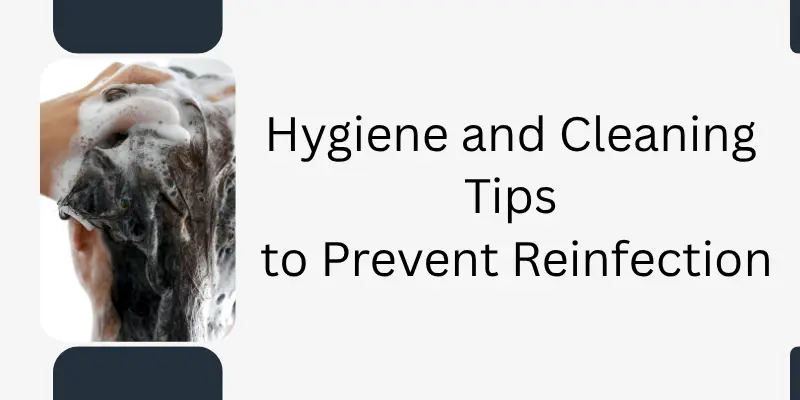
- Wash clothing, bed sheets, and pillowcases in hot water.
- Soak combs and brushes in boiling water for 10 minutes.
- Vacuum sofas and carpets.
- Disinfect soft toys and hair ties.
Teach kids not to share brushes, hats, or headphones. Know how often to treat lice, usually every 7 to 10 days, until you see no signs.
When to Seek Medical Help
If lice keep returning, you might be dealing with treatment-resistant lice. In this case:
- Try over-the-counter treatments with permethrin (but watch for side effects like itching or redness).
- If that fails, see a doctor for prescription lice medications such as malathion.
Use all products as directed for best results.
Table: Common Lice Treatments at Home vs. Medical
| Treatment Type | Works On | Repeat Needed? | Safe for Kids? |
| Coconut Oil & Vinegar | Nymphs & Adults | Yes | Yes |
| Wet-Combing Method | Nits & Live Lice | Yes (every 3 days) | Yes |
| Tea Tree Oil | Adult Lice | Yes | Yes (in small doses) |
| Over-the-Counter Treatments | All Stages | Yes | Mostly |
| Prescription Medications | Resistant Lice | Yes | Doctor’s advice needed |
Quote to Remember:
“Lice don’t care about your hygiene. They only care about contact.”
Dr. Emily Clarke, Pediatrician
Conclusion
Getting rid of head lice might seem tough, but with the right knowledge and patience, it’s completely possible at home. Use natural remedies for lice, apply the wet-combing method, and follow strict cleaning routines to stop the cycle. Be consistent and know how often to treat lice to avoid reinfestation. If home remedies don’t work, don’t wait to consult a doctor for stronger options. Stay vigilant with checks, and you’ll eventually beat them. With these effective tips to remove lice from hair permanently at home, your scalp will stay itch-free, clean, and healthy.
FAQs
The most effective anti-lice treatment is a lice shampoo containing permethrin or pyrethrin, which kills live lice. After shampooing, use a fine-toothed nit comb to remove lice eggs (nits) from the hair shafts. Repeat combing daily for at least a week to ensure all lice and nits are removed. Following instructions carefully is crucial for safety and effectiveness. Combining shampoo treatment with thorough combing maximizes results and prevents reinfestation.
The best approach combines prescription lice medications with the wet-combing method. Prescription treatments like malathion or ivermectin are strong and effective against resistant lice. Wet combing every few days ensures eggs are removed mechanically. Treating all household members if necessary helps prevent reinfestation. Patience and consistency are key, as lice life cycles can last several weeks.
The quickest method involves using a lice-killing shampoo immediately followed by nit combing. Shampooing kills most adult lice, while combing removes eggs and remaining lice. Repeat the process after 7–10 days to catch any newly hatched lice. For faster results, wash bedding, clothes, and hats in hot water and dry on high heat. Maintaining hygiene and combing diligently prevents reinfestation.
Natural essential oils like tea tree, lavender, and eucalyptus can help repel lice. Add a few drops to your shampoo or create a light hair spray for daily use. The strong, pleasant scents make hair less attractive to lice. Regular application can reduce the risk of infestation but may not fully replace active treatments. Combining repellents with routine combing gives better protection.
Natural options include coconut oil or neem oil, which suffocate lice and make them easier to comb out. A salt-vinegar spray can help loosen eggs and dry them out. These remedies are gentle and safer for children’s sensitive scalps. Always do a patch test before applying oils or sprays to check for allergies. Consistent use along with combing increases their effectiveness.
Yes, lice can survive up to 48 hours on bedding, clothes, hats, or furniture. To prevent reinfestation, wash fabrics in hot water and dry on high heat. Vacuum floors, upholstered furniture, and car seats thoroughly. Avoid sharing hats, combs, or hair accessories. Keeping the environment clean complements hair treatment and reduces the chance of lice spreading.
Treatment should be done every 7–10 days until no live lice or nits are seen. This schedule helps break the lice life cycle and prevents recurrence. Daily nit combing between treatments improves effectiveness. Treat all household members if needed, even if they show no symptoms. Consistency is the key to fully eliminating lice from home and hair.
Lice are likely gone when combing reveals no live lice or shiny eggs. Continue checking hair every few days for at least two weeks. Even a single missed nit can restart an infestation. Observe for itching or irritation, which may indicate remaining lice. Maintaining routine hair hygiene and combing ensures lice are completely eradicated.
No, vinegar cannot kill lice eggs, but it helps loosen the glue that attaches nits to hair strands. This makes combing them out easier. Always follow vinegar application with thorough nit combing for effective removal. Vinegar is best used as a supportive measure alongside other treatments, not as a standalone solution. Avoid leaving vinegar on the scalp too long to prevent irritation.
Most natural remedies, such as coconut oil, neem oil, and gentle combing, are safe for children. They avoid harsh chemicals that can irritate sensitive scalps. Always check for allergies and do a patch test before applying oils or sprays. If lice persist or the infestation is severe, consult a pediatrician for appropriate treatment. Combining safe home remedies with proper hygiene ensures effective and gentle care.

- Be Respectful
- Stay Relevant
- Stay Positive
- True Feedback
- Encourage Discussion
- Avoid Spamming
- No Fake News
- Don't Copy-Paste
- No Personal Attacks

- Be Respectful
- Stay Relevant
- Stay Positive
- True Feedback
- Encourage Discussion
- Avoid Spamming
- No Fake News
- Don't Copy-Paste
- No Personal Attacks


